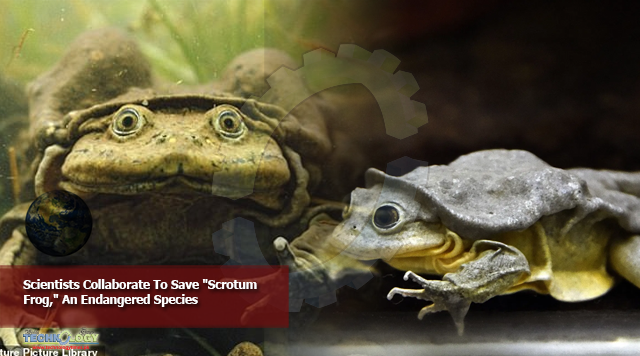Known by the scientific name Telmatoius culeus and as the Titicaca water frog, it also has the nickname of “scrotum frog.”

By Wikimedia Commons
Scientists are teaming up to help save the “scrotum frog,” an endangered species of frog native to South America. Known by the scientific name Telmatoius culeus as well as the more commonly used Titicaca water frog, the frogs grow up to 20 centimeters, making them the world’s largest entirely aquatic frog.
Their nickname is derived from how the loose skin on its body makes it resemble a human scrotum. Its unique appearance has been commemorated in a 1 sol coin issued by Peru in 2019, and saw it as one of the top contenders for ugliest animal in a 2013 vote by the Ugly Animal Preservation Society, which seeks to draw attention to endangered species that do not have the advantage of being cute. However, it lost the vote that year to the blobfish.
They also have value as an indicator species, which is a term for species that can be used as an indicator of how healthy the ecosystem it thrives in,is and by extension understanding the health of other species in said ecosystem.The frogs primarily live near Lake Titicaca, a large lake spanning an area of 3,200 square miles across Bolivia and Peru.
However, their numbers are dwindling. Over-harvesting for human food (despite hunting and trading the frogs being illegal in Peru, Bolivia and internationally), as well as invasive trout and loss of habitat have had untold consequences for their numbers. Because of the lake’s sheer size and plethora of habitats, it is next to impossible to get an accurate figure on the living population of frogs.
Nonetheless, their decline has been something conservationists have been worried about for decades. The International Union for Conservation of Nature (IUCN) recorded an 80% population drop between 1994 and 2004.In the years since, however, the lake hasn’t improved.
The IUCN claims it will most likely continue to get worse, and over 90% of the population may have died off on the Bolivian side of the lake.
Originally published at The Jerusalem post